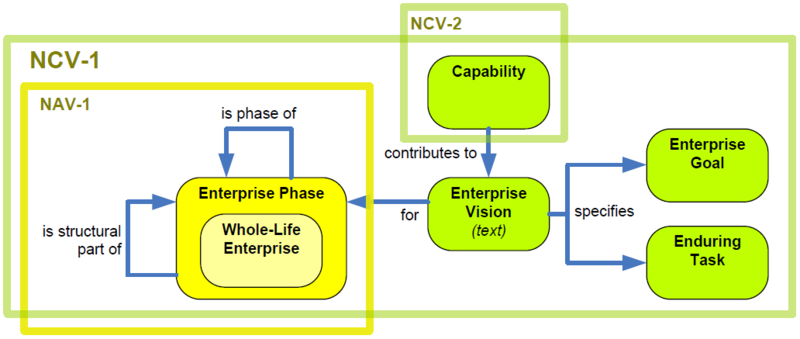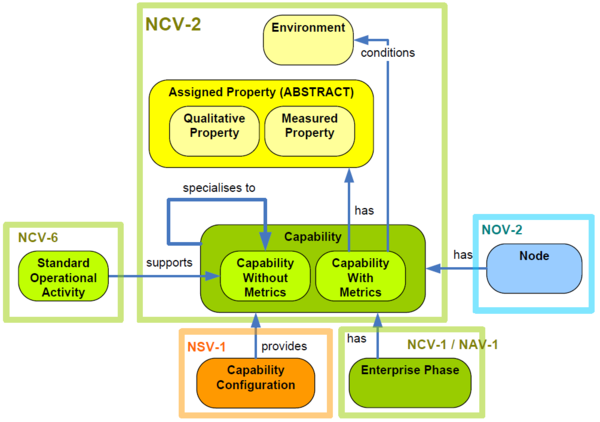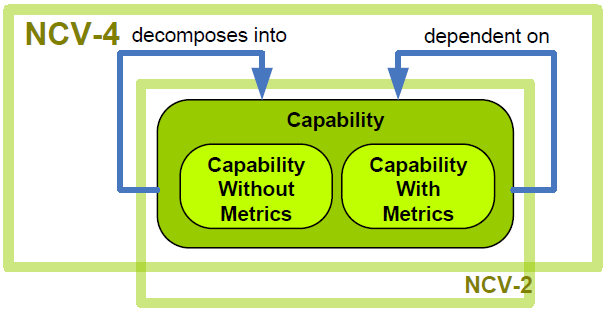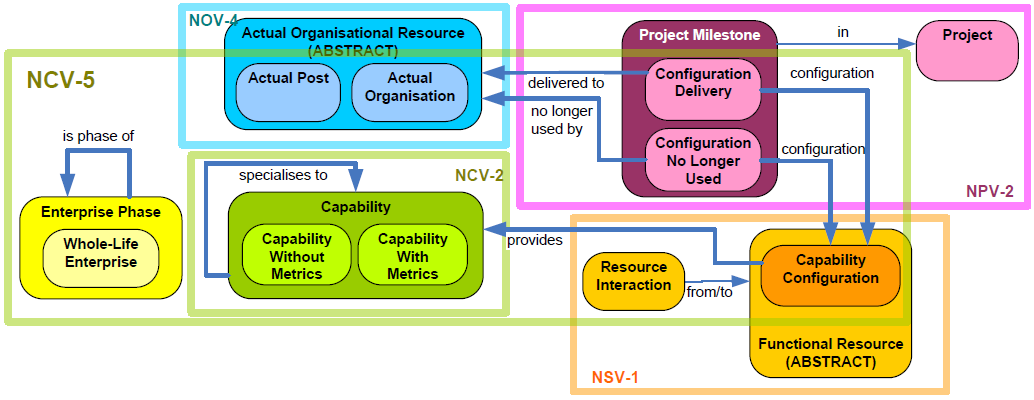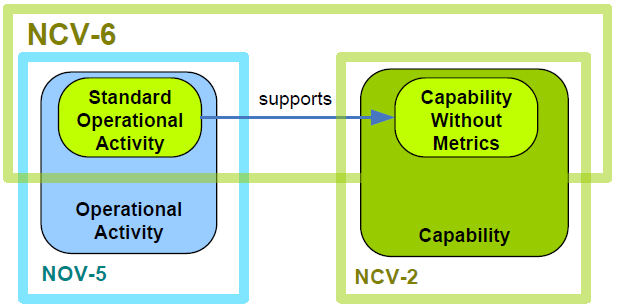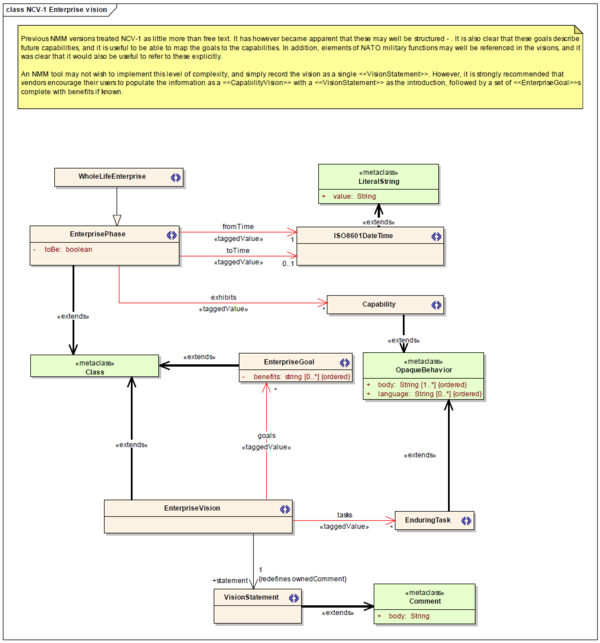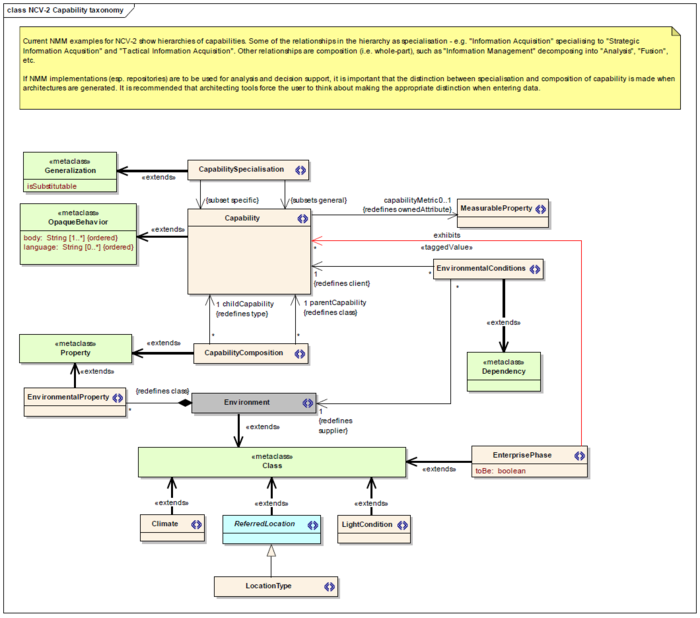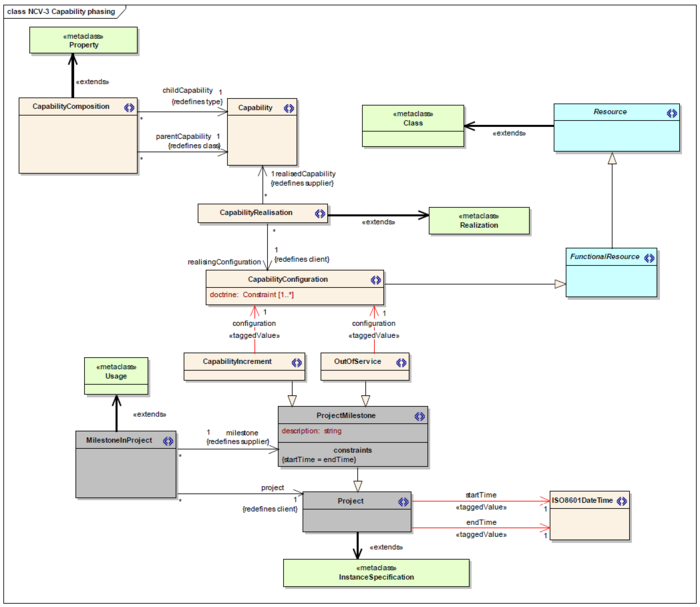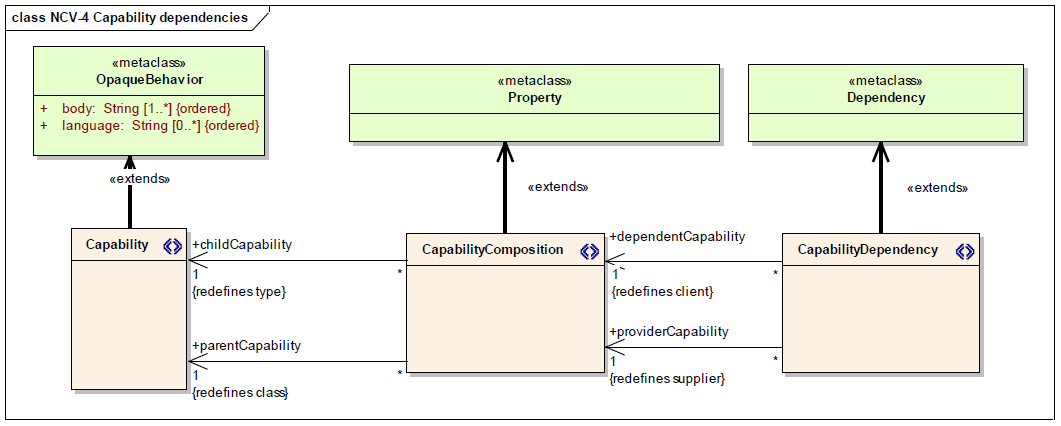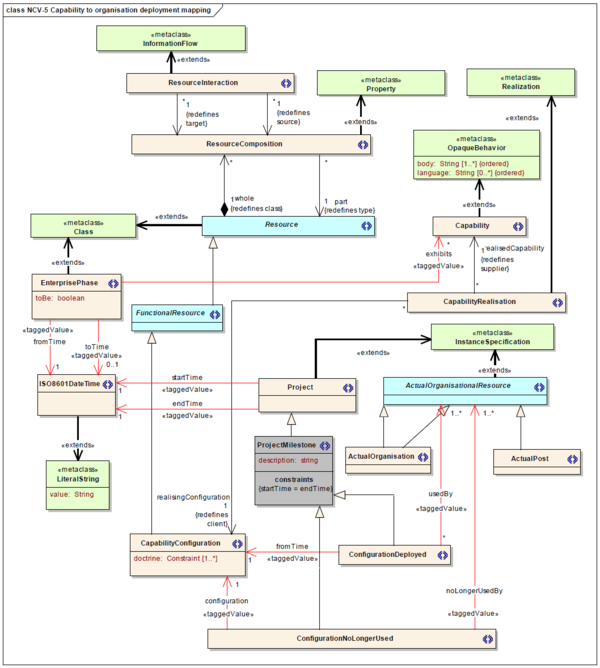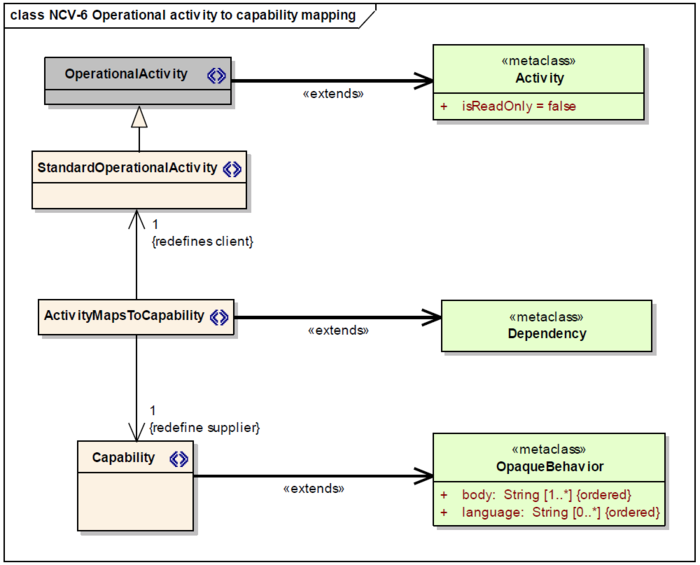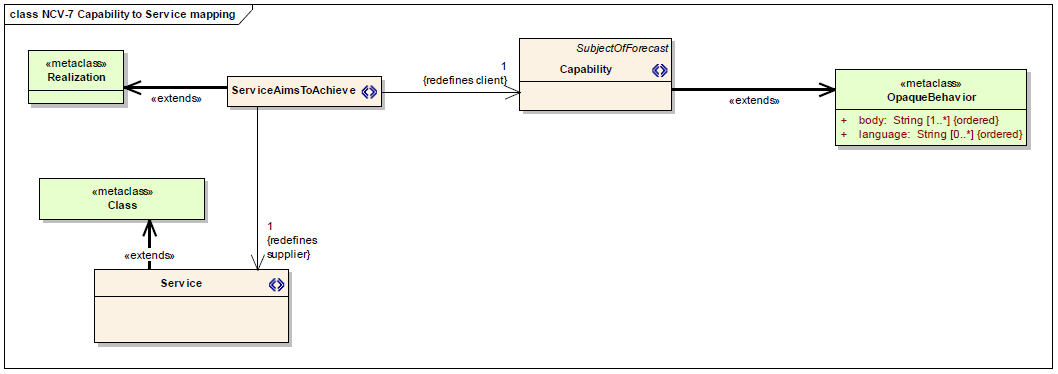Nato Architecture Framework (NAF) - 4.3 - NATO Meta Model - NCV
<slideshow style="nobleprog" headingmark="。" incmark="…" scaled="false" font="Trebuchet MS" >
- title
- NAF - Part 4.3 - NATO Meta Model - NCV
- author
- Bernard Szlachta (NobleProg Ltd)
</slideshow>
NATO Capability View (NCV)
NCV-1 Capability vision。
- It should be noted that visions for capabilities of the enterprise should therefore be placed within entities stereotyped as <<EnterpriseVision>>.
- The data in an NCV-1 can include:
- Enterprise Vision
- Enterprise Phase
- Enterprise Goals
- Capability
- Enduring Task
Nato Architecture Framework (NAF) - 3.2 - NATO Capability View#NCV-1.2C_Capability_Vision
NCV-2 Capability taxonomy。
- The NCV-2 Product models capability taxonomies.
- The view presents a hierarchy of capabilities. These capabilities may be presented in context of an Enterprise Phase – i.e. it can show the required capabilities for current and future enterprises.
- The data in an NCV-2 can include:
- Capability
- Capability Specialization (relationship between capabilities)
- Enterprise Phase
Nato Architecture Framework (NAF) - 3.2 - NATO Capability View#NCV-2.2C_Capability_Taxonomy
NCV-3 Capability phasing。
The data in an NCV-3 can include:
- Capability
- Capability Configuration
- Capability Increment (Project Milestone)
- Out of Service (Project Milestone)
- Enterprise Phase
Nato Architecture Framework (NAF) - 3.2 - NATO Capability View#NCV-3.2C_Capability_Phasing
NCV-4 Capability dependencies。
The NCV-4 Product describes the dependencies between planned capabilities. It also defines logical groupings of capabilities (capability clusters).
The data in an NCV-4 can include:
- Capability
- Capability Dependency (relationship)
- Capability Composition (relationship)
Nato Architecture Framework (NAF) - 3.2 - NATO Capability View#NCV-4.2C_Capability_Dependencies
NCV-5 Capability to organisational deployment mapping。
NCV-5 addresses the fulfilment of capability requirements, in particular by network enabled capabilities.
The data in an NCV-5 can include:
- Capability
- Capability Configuration
- Resource Interaction (between Capability Configurations or their components)
- Actual Organisational Resource (Actual Post, Actual Organisation)
- Capability Delivery (Project Milestone)
- Capability No Longer Used (Project Milestone)
NCV-6 Operational activity to capability mapping。
The NCV-6 Product describes the mapping between the capabilities required by an Enterprise and the operational activities that those capabilities support.
The data in an NCV-6 can include:
- Capability
- Standard Operational Activity
NCV-7 Capability to service mapping
The NCV-7 Product describes the mapping between the capabilities required by an Enterprise and services as defined for SOA.
The data in an NCV-7 can include:
- Capability
- Services
Nato Architecture Framework (NAF) - 3.2 - NATO Capability View#NCV-7.2C_Capability_to_Services
NCV metamodel diagrams。
- NCV-1 Capability vision
NCV metamodel diagrams。
- NCV-2 Capability taxonomy
NCV metamodel diagrams。
- NCV-3 Capability phasing
NCV metamodel diagrams。
- NCV-4 Capability dependencies
NCV metamodel diagrams。
- NCV-5 Capability to organisational deployment mapping
NCV metamodel diagrams。
- NCV-6 Operational activity to capability mapping
NCV metamodel diagrams。
- NCV-7 Capability to service mapping
NCV metamodel glossary。
| Element | Definition |
|---|---|
| ActivityMapsToCapability | Asserts that a <<StandardOperationalActivity>> is in some way part of a <<Capability>>.
The nature of the mapping should be specified in the name of the dependency. |
| Capability | A high level specification of the enterprise's ability. |
| CapabilityComposition | A parent-child relationship between two capabilities - i.e. the relationship indicates one capability (child) is a sub-capability of the other (parent).
Note for MOD Users: Although the MOD tends to work in terms of capabilities and capability functions, it is not always apparent that there is any difference between them other than their relative positions in a capability taxonomy, which is specified by the <<CapabilityComposition>> relationship. |
| CapabilityDependency | A relationship which asserts that a capability (toCapability) is dependent on another (fromCapability) capability in the context of an overall capability.
Note: this dependency relates parts (i.e. properties) in a composite class diagram, therefore each dependency is in context of the parent composite class. |
| CapabilitySpecialisation | Asserts that one <<Capability>> is a special case of the other. |
| ConfigurationDeployed | Asserts that an <<ActualOrganisationResource>> started to use, or is slated to start using a <<CapabilityConfiguration>> from a specific point in time.
This is used to describe capabilities going into service with specific organisations or posts. |
| ConfigurationNoLongerUsed | Asserts that an <<ActualOrganisationResource>> ceased to use or is slated to cease using a <<CapabilityConfiguration>> from a specific point in time.
This is used to describe capabilities going out of service with specific organisations or posts. |
| EnduringTask | A type of behaviour recognised by an enterprise as being essential to achieving its goals - i.e. a strategic specification of what the enterprise does. |
| EnterpriseGoal | A specific, required objective of the enterprise that the architecture represents.
Note: Benefits of achieving the goal are presented as a list of textual items. |
| EnterpriseVision | The overall aims of an enterprise over a given period of time. |
| EnvironmentalConditions | Asserts that a <<Capability>>'s capabilityMetric (MeasureableProperty) is valid for a particular environment.
Example - a capability with a rate of advance of 40 km per day must be qualified by the environment for which this is specified - e.g. desert conditions. |
| StandardOperationalActivity | An <<OperationalActivity>> that is a standard procedure that is doctrinal.
Note: This is equivalent to what some defence organisations call JETLs. |
| VisionStatement | A high-level textual description of a <<EnterpriseVision>>.
Note: <<VisionStatement>> is a stereotype of UML::Comment and the [body] of the comment shall be represented as XHTML. If plain text is required, then no HMTL tags should be embedded. |
